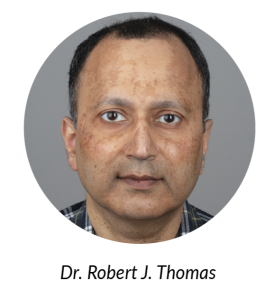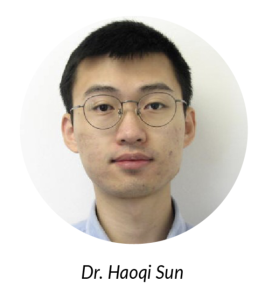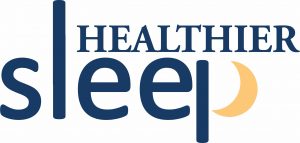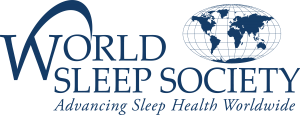 The measurement of sleep produces a large amount of data. Imagine – hours and hours of measurements from different parts of the sleeping brain and body. While complicated enough in health, there are so many changes at different ages, and of course, in sleep disorders. Some “rules” to help keep all this information under some order are required. Sleep medicine has largely used “rules-based” measurements from its inception – with specific criteria for different measurements such as brain wave and breathing. These rules are relatively rigid and – while convenient – tend to “lump” physiology, pathology, and indeed, individuals. Thus, two or more persons who are actually quite different may look similar. Though useful to convert large amounts of data into digestible bits, much of the information content is lost from this simplification.
The measurement of sleep produces a large amount of data. Imagine – hours and hours of measurements from different parts of the sleeping brain and body. While complicated enough in health, there are so many changes at different ages, and of course, in sleep disorders. Some “rules” to help keep all this information under some order are required. Sleep medicine has largely used “rules-based” measurements from its inception – with specific criteria for different measurements such as brain wave and breathing. These rules are relatively rigid and – while convenient – tend to “lump” physiology, pathology, and indeed, individuals. Thus, two or more persons who are actually quite different may look similar. Though useful to convert large amounts of data into digestible bits, much of the information content is lost from this simplification.
Data in sleep medicine are intrinsically big,” in terms of the large number of people suffering from sleep disorders, the multiple signal modalities collected during sleep through polysomnography (PSG), the possibility of nearly endless recordings from the same individual, and the rich information contained in PSGs. Therefore, sleep medicine is an important venue for data-driven approaches, especially artificial intelligence (AI), and AI has become an important technology in sleep medicine and vice versa. In the AI approach, various computational methods and “architectures,” or types of connections in computers, which talk to each other in interconnected layers of information transfer and manipulation are able to establish and extract obvious and non-obvious patterns in data.
It would seem that sleep data are made for AI! AI can be applied to improve sleep in various modes. Here we summarize the applications into three levels: (1) improving the efficiency of existing sleep scoring, sleep disorder diagnosis, and treatment management; (2) new metrics of health biomarkers and interventions which are difficult to be implemented in a rule-based approach; and (3) predicting future incidence of outcomes for identifying people with high risk in advance.
To be fair to the rule-based approach, the initial training of AI sleep analytics systems often uses rules as the foundation (a supervised or semi-supervised approach), but AI can also be entirely unsupervised. When the AI system is unsupervised, the system is allowed to “see what is going on with its own eyes” without constraints. Nothing prevents a mutually beneficial interaction – where AI outputs could change rules which in turn could change the parameters of the AI analysis, and repeat.
1) Improving Efficiency
The job of a sleep technologist who mostly scores sleep studies – a long tradition in sleep medicine – is surely at risk. AI-assisted sleep scoring is becoming more commonly accepted. Instead of manually determining the sleep stages for more than 800 pages of sleep recording per night, sleep stages are automatically determined by an AI algorithm. The accuracy of AI-based sleep staging has reached the same level as the accuracy of human sleep scorers. These algorithms also make the same types of errors humans do! After all, the training material is human.
In addition to the conventional sleep stages (hypnogram), the probability of being one of the five sleep stages can also be reported (hypnodensity graph) quantitatively reflecting the uncertainty in transitional stages. Transitions and fuzziness of rapid eye movement (REM) sleep or dream sleep, non-REM sleep, and wake states are common in disease states. Other important events including abnormal breathing, very brief (few seconds) awakenings from sleep movement of the legs, etc., are also automated. Automated sleep scoring improves the efficiency and reproducibility of a doctor’s diagnosis, such as sleep apnea (bad breathing during sleep), insomnia (taking too long to fall asleep, waking up too early, or waking up too many times), and narcolepsy (a condition causing extreme sleepiness in the daytime). Both single and multiple sources of information can be analyzed using AI, including data from wearable and non-touch devices, as these come into the medical mainstream.
2) New Metrics of Sleep
AI can be used to extract new information from sleep that cannot be explicitly expressed as rules. For example, sleep quality is a nonspecific term that could either mean the subjective feeling of refreshment when getting up, the objective percentage of deep sleep, or the association with cognition and unfavorable outcomes which is clinically more relevant. One example is sleep-based “brain age.” Many sleep patterns change with age; therefore, sleep patterns resemble sleep from a different age when the brain deviates from normal aging. In essence, if your sleep “looks” older than your calendar age, you are in trouble! AI is used to summarize the age-related changes in sleep into an age-like number. Older brain age has been associated with dementia and higher mortality.
Another example is predicting cardiovascular diseases (CVD). AI is used to estimate the likelihood of CVD using oxygen and heart rate fluctuations during sleep. When it comes to sleep apnea, analysis at the borderland of rules and AI is used to classify four “endotypes,” or mechanisms of disease, of obstructive sleep apnea (OSA) using PSG, which then enables personalized OSA treatment plans. In brief, bad breathing during sleep can be caused by more than one problem. For instance, breathing may be “wobbly” because its control is not precise, or one might wake up too easily from small changes in breathing. Using a rules-based approach may not differentiate these types of bad breathing during sleep, and thus, treatments are not aimed properly at the cause. Thus, not just opening the airway, but also targeting breathing control or even sleep itself can enable “precision and personalized” sleep apnea care.
3) Predicting the Future
The most common sleep disorder, obstructive sleep apnea, can be effectively treated by using a continuous positive airway pressure (CPAP) mask. However, only 50% of patients are still using theirs after 12 months. One important AI application is to predict who will, or will not, give up. Sleep also contains information about future risk of unfavorable outcomes such as death, abnormal brain development including autism, and dementia (like Alzheimer’s disease, with loss of memory), which can be extracted using AI. These methods are still in development. In fact, sleep can be considered a window into the health of numerous biological systems, including the brain, heart, and lungs. Sleep also is a general marker of health, in that sleep becomes light and fragmented when one is sick – cancer, infection, and so on. Sleep then can be used as a way to track overall health, not just as a state with its own disorders which need treatment.
Future of AI in Sleep Medicine
The important limitations, and hence important future work for AI in sleep medicine, include its inability to interpret the results for some AI methods (the machines never say “I do not know!”), the lack of confidence measures (“how correct is the machine?”), biases in accuracy (performing better in some instances than others, but in an unpredictable way) due to lack of heterogeneity in the dataset (the data used for training is not representative of the data the machine is asked to analyze), and lack of standard certifications for validating AI algorithms for clinical use (most researchers create their own methods and think their method is the best!). If nothing else, the prospect of financial savings will drive integration of AI into sleep medicine practice but blind acceptance without healthy skepticism is foolish.

Robert J. Thomas, MD is a Professor of Medicine at Harvard Medical School, Division of Pulmonary, Critical Care & Sleep Medicine, Department of Medicine, Beth Israel Deaconess Medical Center. He has been working in the field of sleep medicine and research for nearly 30 years.

Haoqi Sun, PhD is an Instructor of Neurology at Harvard Medical School and Department of Neurology, Beth Israel Deaconess Medical Center. He comes with a background of Artificial Intelligence (AI) and has
been working to bring AI into sleep research for 5 years.
References
Bandyopadhyay, A. and Goldstein, C., 2022. Clinical applications of artificial intelligence in sleep medicine: a sleep clinician’s perspective. Sleep and Breathing, pp.1-17.
Stephansen, J.B., Olesen, A.N., Olsen, M., Ambati, A., Leary, E.B., Moore, H.E., Carrillo, O., Lin, L., Han, F., Yan, H. and Sun, Y.L., 2018. Neural network analysis of sleep stages enables efficient diagnosis of narcolepsy. Nature communications, 9(1), pp.1-15.
Sun, H., Paixao, L., Oliva, J.T., Goparaju, B., Carvalho, D.Z., van Leeuwen, K.G., Akeju, O., Thomas, R.J., Cash, S.S., Bianchi, M.T. and Westover, M.B., 2019. Brain age from the electroencephalogram of sleep. Neurobiology of aging, 74, pp.112-120.
Ye, E., Sun, H., Leone, M.J., Paixao, L., Thomas, R.J., Lam, A.D. and Westover, M.B., 2020. Association of sleep electroencephalography-based brain age index with dementia. JAMA network open, 3(9), pp.e2017357-e2017357.
Blanchard, M., Feuilloy, M., Gervès-Pinquié, C., Trzepizur, W., Meslier, N., Goupil, F., Pigeanne, T., Racineux, J.L., Balusson, F., Oger, E. and Gagnadoux, F., 2021. Cardiovascular risk and mortality prediction in patients suspected of sleep apnea: a model based on an artificial intelligence system. Physiological Measurement, 42(10), p.105010
Eguchi, K., Yabuuchi, T., Nambu, M., Takeyama, H., Azuma, S., Chin, K. and Kuroda, T., 2022. Investigation on factors related to poor CPAP adherence using machine learning: a pilot study. Scientific Reports, 12(1), pp.1-9.



